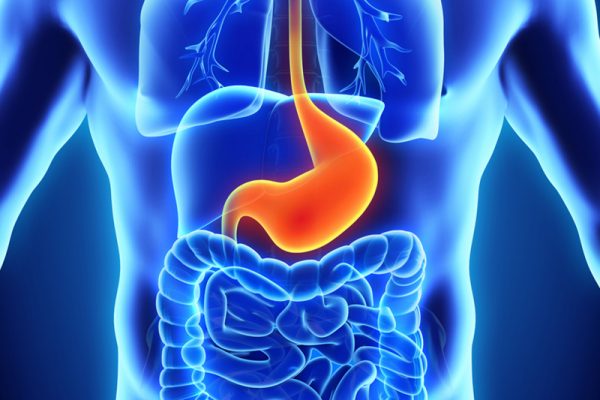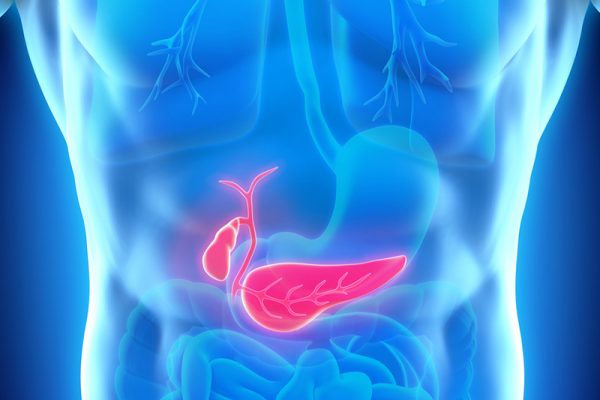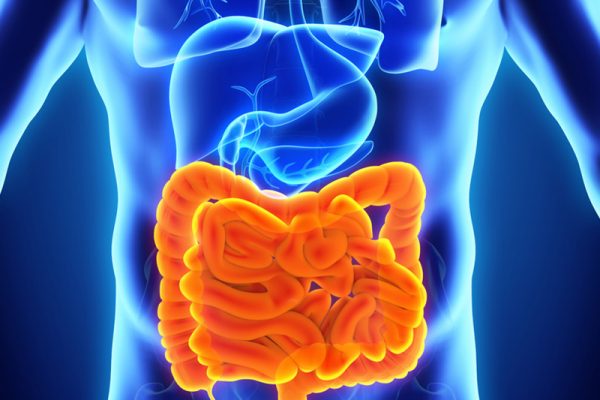General Information About Bitter Principles
Bitter principles are not nutrients in a classic sense; they mostly belong instead to the secondary plant substances. In former times, plant substances were classified in accordance with their “value” to human nutrition: [1]
“Primary” substances are satiating substances that provide energy such as proteins, fats and carbohydrates as well as essential minerals and vitamins. “Secondary” substances are all other plant substances considered as nonessential, as their absence would not cause starvation or malnutrition. Nevertheless, they can definitely have effects that promote health. [2]
The term “bitter principles” is a collective designation for various substance classes that are frequently categorised as part of the secondary plant metabolism. These classes differ significantly from one another in their chemical structure and with respect to their physical-chemical properties. These compound classes include the isoprenoids (e.g. monoterpenes, sesquiterpenes and triterpenes), phenols, polyphenols, alkaloids, amino acids, peptides, saponins and lignans. [1]
Typical vegetable foodstuffs that contain bitter principles are herbs and spices such as curcuma, rosemary, sage, parsley and borage, vegetables (artichokes, asparagus, peppers) and lettuce (chicory, endive, radicchio, rocket). Variants low in bitter principles have been bred for vegetables such as courgettes, squash and cucumber because the taste is often unpopular and therefore undesirable. [1]
Many bitter principles are pharmacologically highly effective and are used in the form of drugs containing bitter principles (also known as amara mera), for the treatment of gastrointestinal disorders or as appetite stimulators. Their spasmolytic, anti-inflammatory, antimycotic or antibacterial effects are also used. [1]
Sensory Perception of the Bitter Taste
The perception of the sensory quality of a foodstuff is influenced by the smell (aroma), taste, texture and colour. The perceived flavour during a meal, on the other hand, is the result of various stimuli processed by cells of the tongue, oral cavity and nose. Taste perception is known as gustatory perception while the significantly more complex smell or aroma perception through the nose is referred to as the olfactory sensory impression. This is where a large number of various volatile aromatic substances can be detected. [4]
The taste buds on the human tongue can distinguish among five basic types of taste: sweet, sour, bitter, salty and umami. [4] Whether fatty is a taste perception is currently the subject of discussion. The topographical distribution of the taste sensors on the tongue for the various types of taste vary; for instance, sweet is more likely to be detected at the tip of the tongue, while bitter is more toward the back. [3, 5]
Each of the taste buds has about 10–50 taste cells. Flavourings from food bind to specific receptors that are found in the membrane of these sensory cells. The binding of receptor protein and flavouring triggers different mechanisms, depending on the flavour, resulting in a synaptic stimulus conduction to the brain via the nervous system. [3]
If the flavour is salty or sour, ions are the triggers for the chemical stimuli of the taste cells; in this case, we speak of ionotropic receptors or ionic channels. It is assumed that metabotropic receptors come into play for the perception of the tastes sweet, bitter and umami; in this case, the chemical stimulus is prompted by the interaction of flavourings with cell membrane proteins that conduct the signal via intracellular cascades transmitted by G protein. [5, 6]
In contrast to the flavour sweet (2–3 different receptors), there are more than 50 different receptors for the flavour bitter, and it is possible to recognise many different bitter principles. This makes especially good sense from an evolutionary viewpoint because bitter foodstuffs were frequently poisonous and the many different bitter receptors can therefore be considered to serve as protection from dangers. An excess of bitter principles triggers a retching reflex so that potentially poisonous foods are discharged. [1]
Effect Mechanism in the Body
Using a reflex pathway, bitter principles activate the sensory organs of the mouth cavity (bitter receptors) to stimulate salivary glands and gastric secretion (induction of hydrochloric acid and pepsin secretion = cephalic phase) via the Nervus vague (cf. Figure 1). [7]

Promotion of the secretion of the hormone gastrin stimulates peristaltic movement of the stomach and the small intestine. [7]
In addition, bitter tasting reflexes induce the release of bile (cholagogic effect) and increase the production of pancreatic juice, which are both secreted into the duodenum (first segment of the small intestine; cf. Figure 2). [7]

Perfusion of the small intestinal mucosa is increased, improving the absorption of vitamins (A, D, E, and K), iron (Fe III) and amino acids, as well as the excretion of metabolic products (cf. Figure 3). [7]

The Complex Effect of the Hormone Cholecystokinin
Synthetisation of the hormone cholecystokinin (CCK) in the first segment of the duodenum is stimulated by monoglycerides and by free fatty acids, but also by bitter principles. The release of CCK induces the contraction of the smooth muscles of the gall bladder, causing the release of bile to increase; the salts in this substance in turn neutralise the acidic bolus from the stomach and emulsify the lipids it contains. Moreover, CCK stimulates the pancreas to produce an alkaline secretion containing lipases (= enzymes for the digestion of fats). CCK stimulates contractions of the small and large intestines, and as an antagonist of the hormone gastrin and like the hormone secretin inhibits the release of hydrochloric acid in the stomach. [8]
Cholecystokinin is also one of the many factors in creating a feeling of satiety, by inhibiting the hunger-inducing hormone ghrelin, but it is also involved in learning and memory processes and in the modulation of states of anxiety and panic. [8]
Nutritional Significance
As described in the previous chapter, bitter principles are capable of unleashing a tremendous range of biochemical effect mechanisms in the body, thereby preventing various functional disorders. According to Überall et al. [9], bitter plant substances such as polyphenols, tannins and terpenes affect the microflora in the intestine, promote better digestion and display antioxidative, liver-protective and anti-inflammatory effects. Bitter principles are also alleged to improve memory and reduce the ravenous hunger for sweet foodstuffs, simultaneously reducing the risk of obesity or other metabolic anomalies. [9]
During the Stone Age, the ingestion of bitter principles in the diet was ten times higher than today. The primary sources were bitter medicines made from roots and aboveground plant parts as well as herbs and fungi. [9] Over the course of years, the frequently undesirable bitter taste was bred out of the foods with the consequence that foodstuffs that were once bitter (e.g. courgettes, squash or cucumbers) have lost important functions. The risk of gastrointestinal disorders or dysfunctions today is higher because of the lower consumption of bitter principles in comparison with the diet of Stone Age people. [1, 8]
Coffee, herbal schnapps or bitter tonics can be used as compensatory consumption. [1]
Überall et al. [9] illustrate the many diverse nutritional effects of bitter principles from some Alpine herbs: fenugreek seeds are anti-inflammatory and stimulate the intestinal tract and liver; nettles and thyme cleanse the blood and are a source of iron while mallow has a soothing effect; both verbena and yarrow stimulate the production of bile, and the latter is also anti-inflammatory and strengthens the liver, and the list goes on. Overall, intact intestinal flora and consequently overall intestinal health correlate with the regular and increased consumption of bitter principles because these substances act on the regulatory mechanism of the entire digestive tract. [9]
In short, bitter principles play important roles in metabolism of liver and gall bladder, for the gastro-intestinal tract and its blood circulation as well as for the entire immune system. [1]
“Bitter to the mouth, good for the stomach.”
Interesting Facts and Tips
-
- An individual’s taste perception is dependent on the distribution of the receptor gene variants on the chromosomes, so some people, for example, perceive the bitter principle in artichokes as especially intense while others notice almost nothing. [1]
- The perception of the bitter taste is dependent on age. Small children are more likely to demonstrate disgust and revulsion when eating bitter foods while the acceptance of bitterness increases with age and/or is trained. [1] This is part because of the number of taste buds declines with age to < 2,000 while a new-born has about 10,000. [3]
- As a rule, women react with greater sensitivity to bitter principles. [1]
- The positive physiological effects of bitter principles are best achieved when they are regularly consumed prior to meals. [1]
- The ravenous hunger for sweet foods is reduced by the consumption of foodstuffs rich in bitter principles because they trigger a feeling of satiation. [1]
- Because of the secretion of bile, the so-called cholagogue effect, bitter principles can have a mild laxative effect. [10]
Database for Bitter Principles
Since 2011, the freely accessible Internet database “BitterDB” has provided valuable support for research on bitter principles. [11] It includes comprehensive information on all 550 currently known bitter principles. [12] Initiator and sponsor is the Institute for Biochemistry, Food and Nutrition Science of the Department of Agriculture at the Hebrew University in Jerusalem.
Information may be retrieved in various ways, such as by searching for bitter compounds and their bitter-receptors or for bitter molecules with similar structures.
Sources
- Siedentopp, U. Bitter–mehr als ein Geschmack. Deutsche Zeitschrift für Akupunktur, 2016, 59, (3), S. 41-44.
- Franke, E., Lieberei, R., Reisdorff, C. Nutzpflanzen. Georg Thieme Verlag, 2012.
- www.anatomie.net/Unterricht/Skripte/geschmack.pdf, Zugriff: 21.07.2017.
- www.chm.tu-dresden.de/lc2/dateien/2017_DLG_Geruchsschulung_und_ Aromaschulung.pdf, Zugriff: 21.07.2017.
- www.bilder.buecher.de/zusatz/00/00511834_lese_1.pdf, Zugriff 21.07.2017.
- www.lebensmittellexikon.de/g0000070.php, Zugriff: 21.07.2017.
- Rehner, G., Daniel, H. Biochemie der Ernährung, Springer-Verlag Berlin Heidelberg, 2010, S. 177-198.
- Schneider, R. Effekte des Neuropeptids Cholecystokinin auf Gedächtnisprozesse beim Menschen. Dissertation, Universität Düsseldorf Mathematisch-Naturwissenschaftliche Fakultät, 2006.
- Überall, F., Kraneveld, A. D., Szklany, K., de Theije, C. G., Leal-Díaz, A. M., Noriega, L. G., González-Cervantes, R. M. Bitterstoffe für einen gesunden Darm. Erfahrungsheilkunde, 2017, 66, (3), S. 177-181.
- Bühring, U. Praxis-Lehrbuch der modernen Heilpflanzenkunde-Mängelexemplar. Haug Verlag in MVS Medizinverlage Stuttgart, 2011, S. 736.
- http://bitterdb.agri.huji.ac.il/bitterdb/dbbitter.php
- Wiener, A., Shudler, M., Levit, A., Niv, M. Y. BitterDB: a database of bitter compounds. Nucleic acids research, 2011, 40, (D1), D413-D419.
